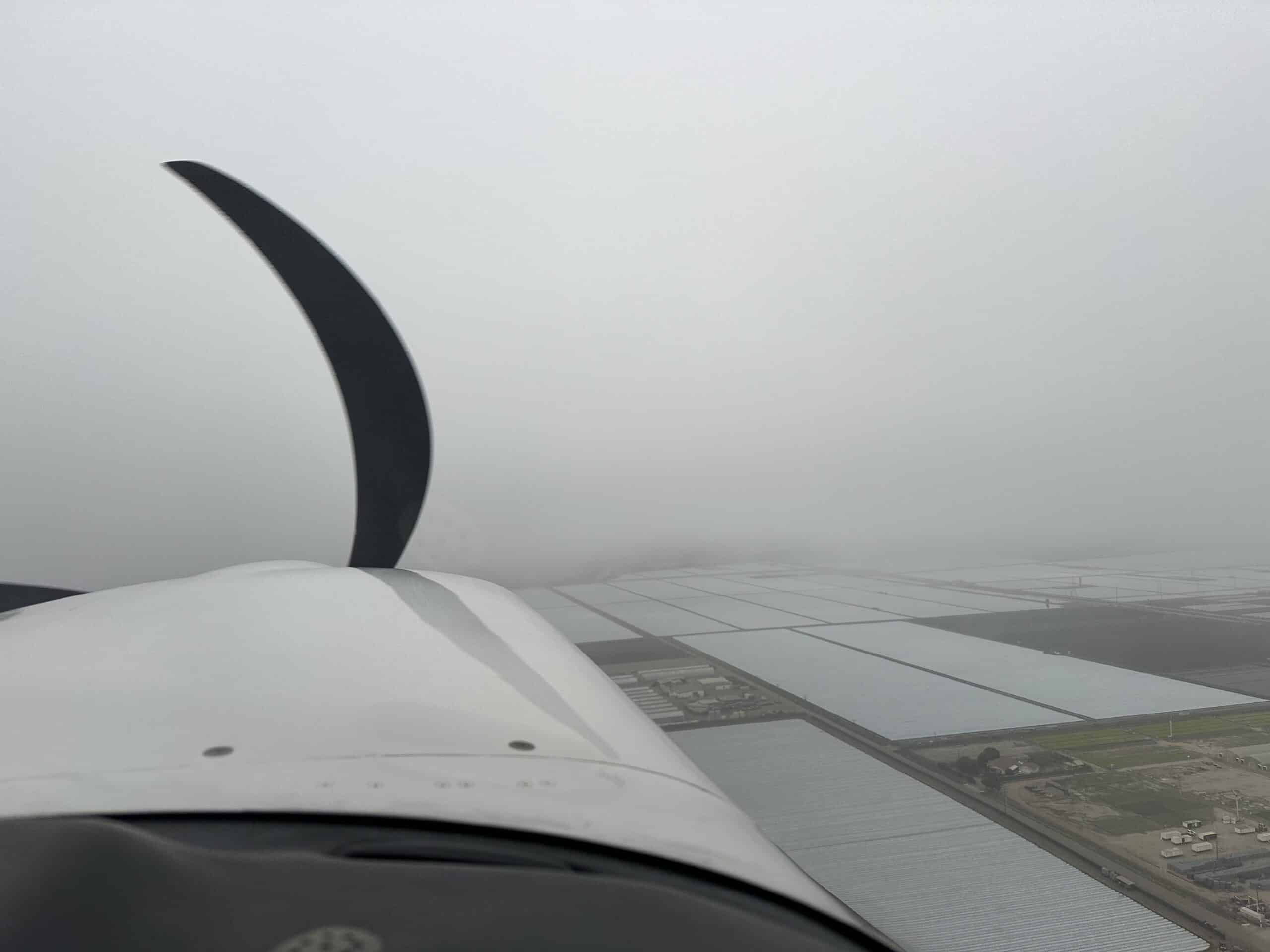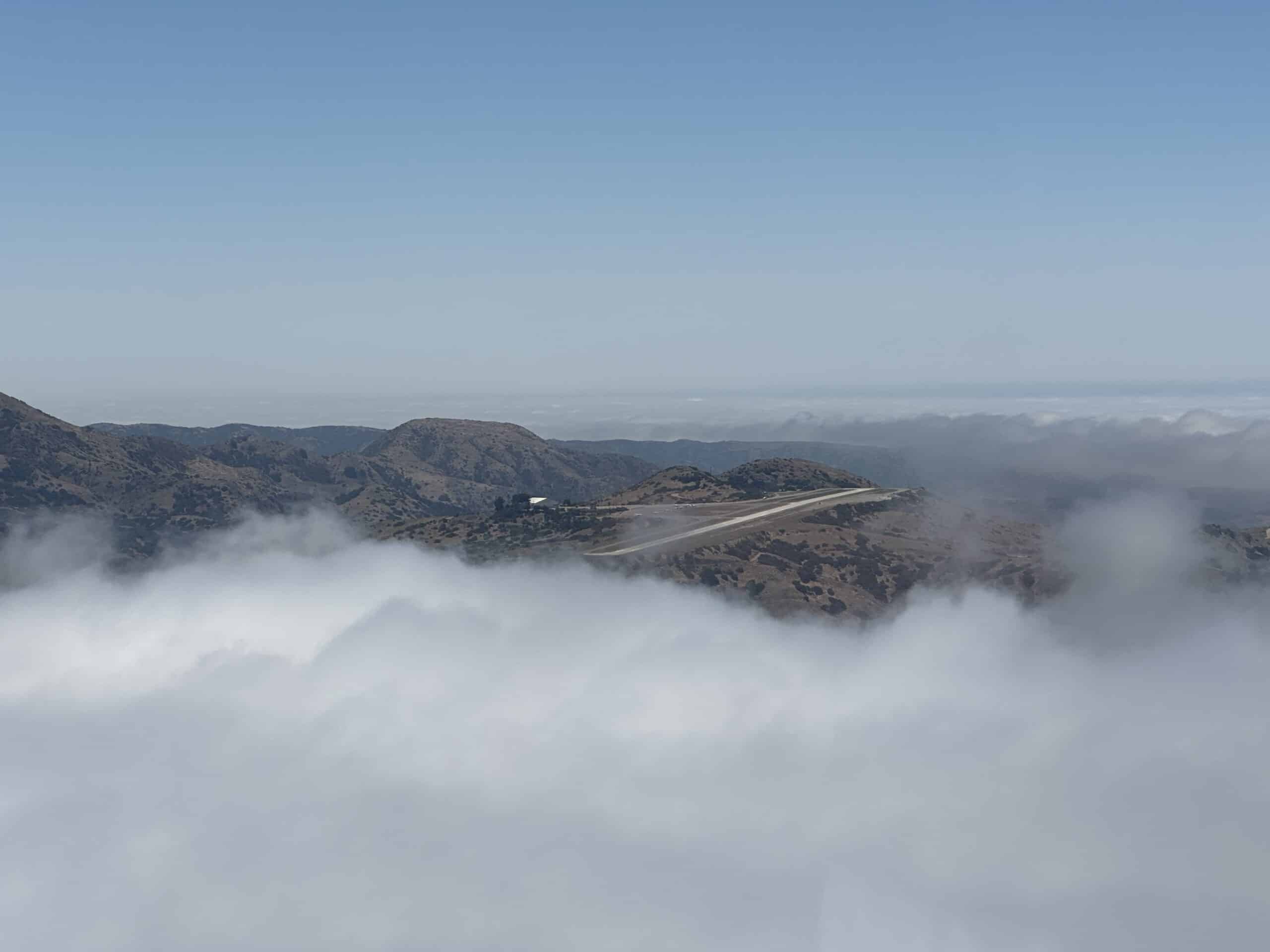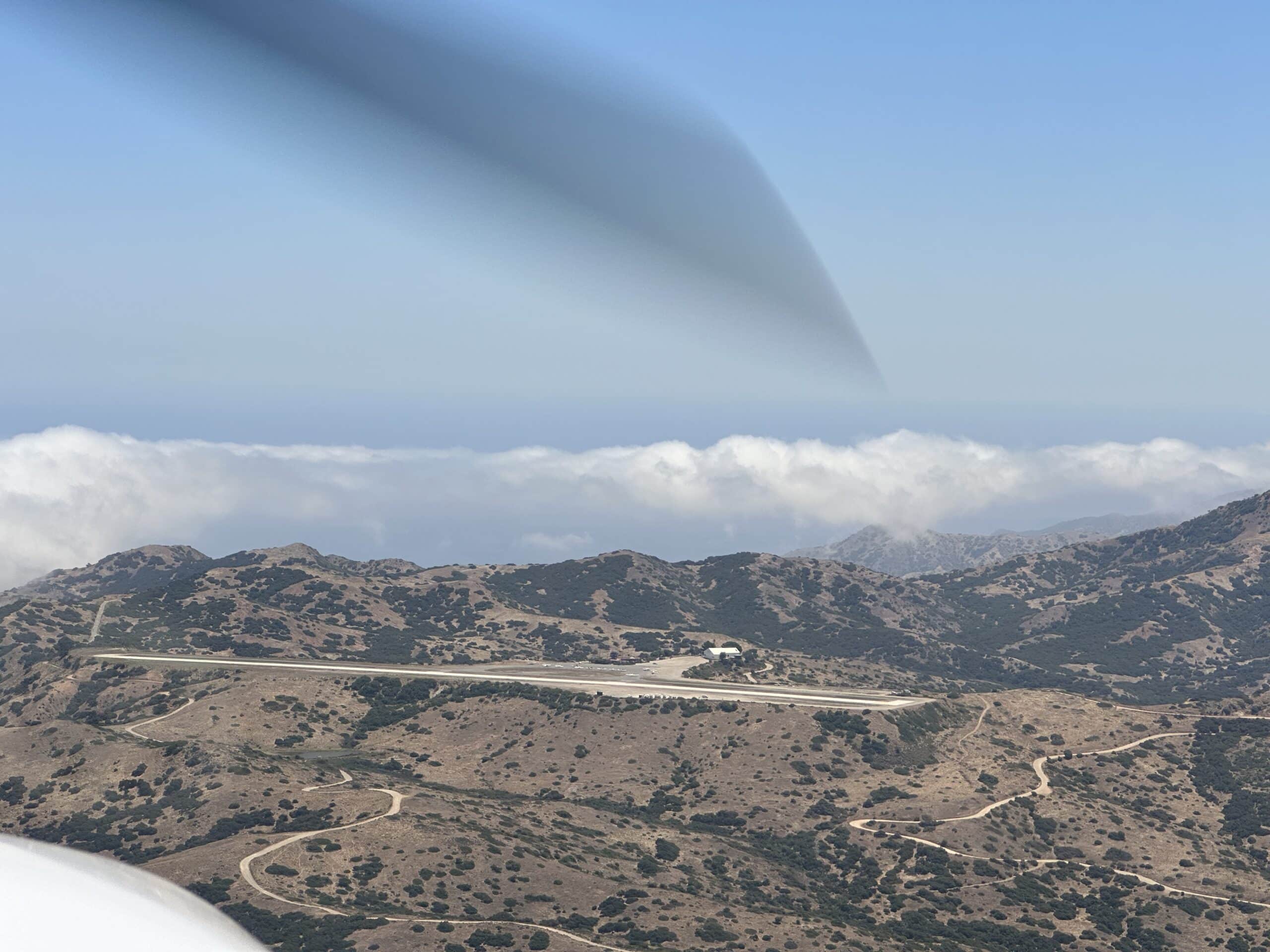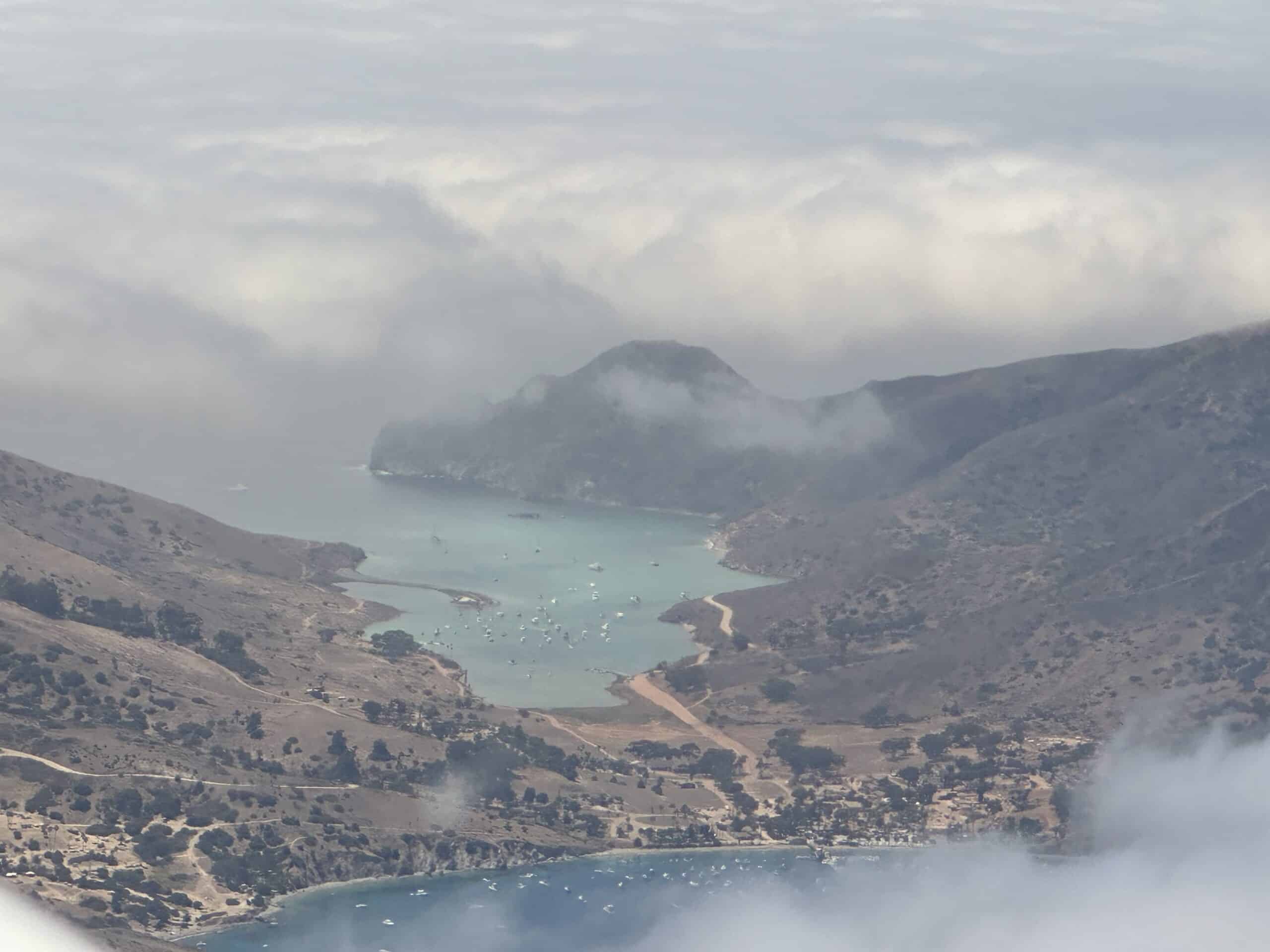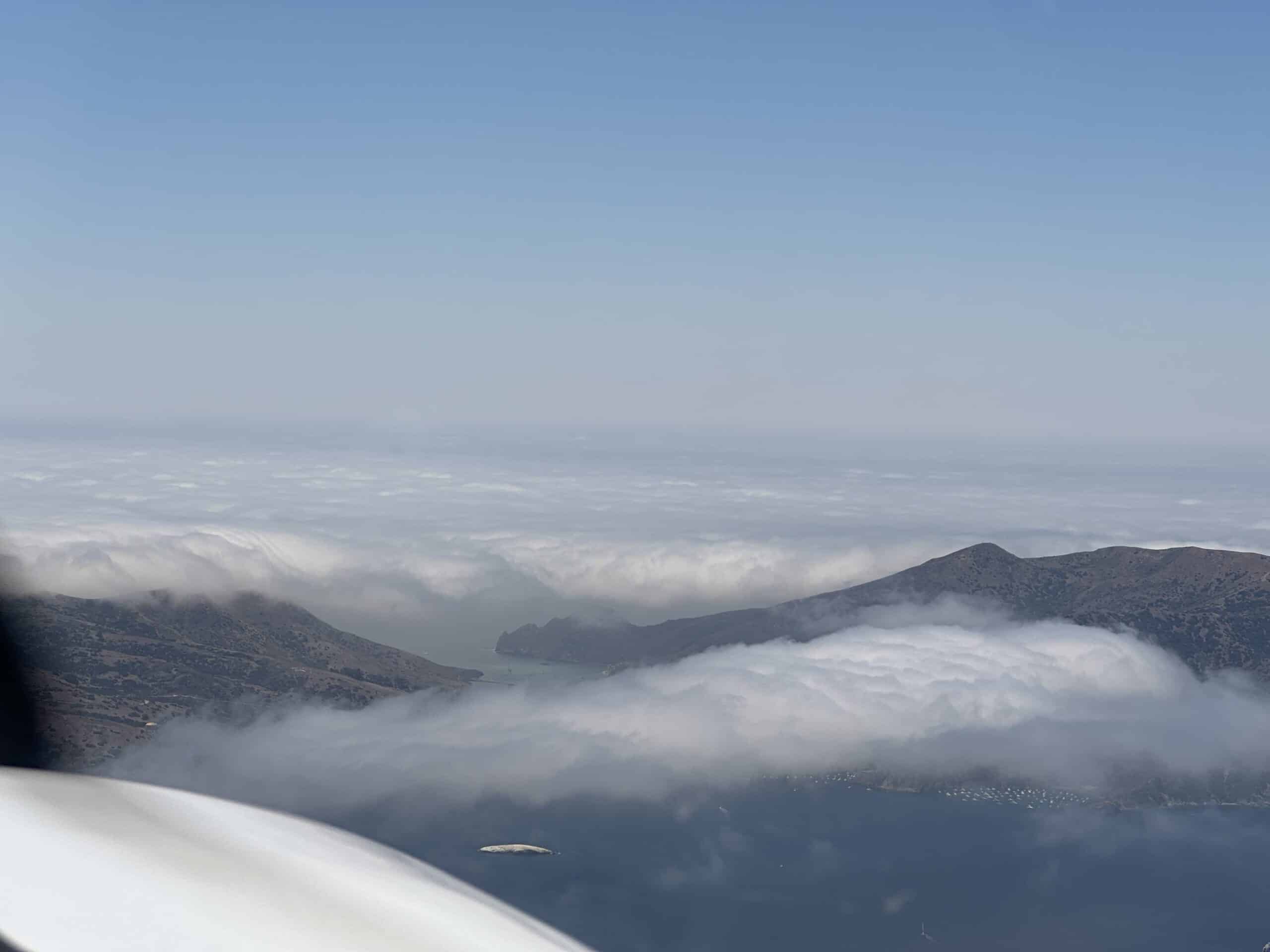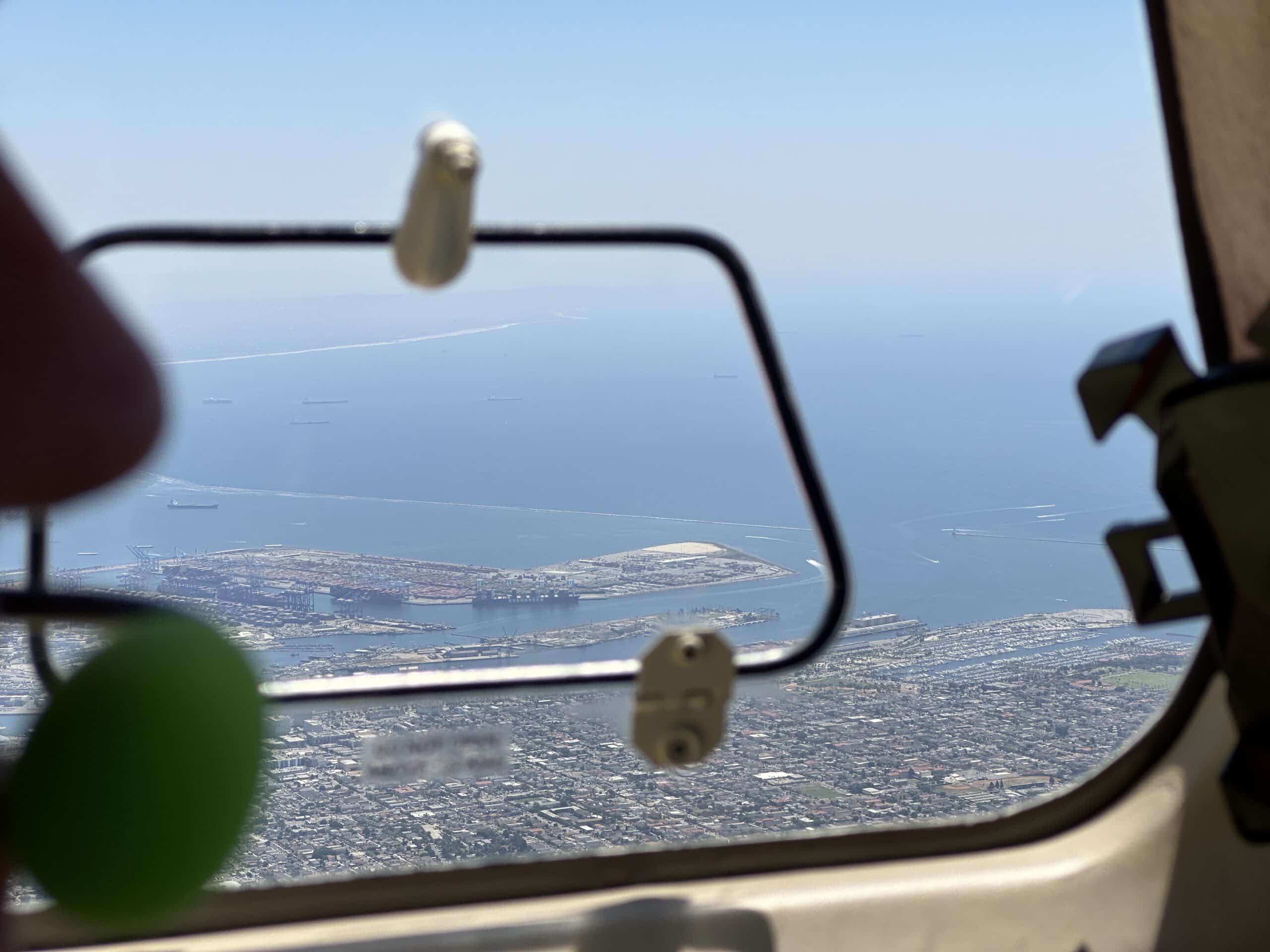In early August, on a Friday morning, we embarked on a picturesque flight from Oxnard (KOXR) to Catalina Island (KAVX). Despite the idyllic setting, the weather at Oxnard was less than ideal due to a phenomenon known as the marina layer with fog. This meteorological condition occurs when a dense layer of fog forms over the ocean and creeps inland, often affecting coastal airports. The fog develops when cooler marine air becomes trapped under a layer of warmer air, creating a thick, low-lying cloud cover that reduces visibility and presents challenges for pilots.
At Oxnard, the weather was classified as IMC (Instrument Meteorological Conditions). IMC refers to conditions in which pilots must rely on their instruments for navigation and control, as visibility is severely reduced, often below the minimums required for visual flight. The ceiling was reported at 600 feet overcast on one half of the runway, while the other half had conditions suitable for VFR (Visual Flight Rules). To navigate this, we filed an IFR (Instrument Flight Rules) flight plan over the TOP, which means climbing through the clouds to reach clearer skies above, allowing us to continue the flight under VFR once we broke through the cloud cover.
As anticipated, by the time we reached Camarillo (KCMA), the weather had improved to VFR, with clear skies and favorable conditions. We flew through the Special Flight Rules Corridor over Los Angeles (LAX) at 3,500 feet, a route that allows pilots to traverse the busy LAX airspace under VFR conditions, with specific altitude and heading requirements to ensure safe separation from commercial air traffic.
After passing over Long Beach, we turned towards Catalina Island, and within 20 minutes, we were approaching the island. KAVX, commonly known as the “Airport in the Sky,” earns its nickname due to its location atop a 1,602-foot mountain, often surrounded by clouds, making it appear as though the runway is floating in the sky. This unique setting presents its own set of challenges, especially during landing.
Approaching Catalina, we flew towards the Two Harbors area before executing a left turn to align with the runway. We entered a right downwind for runway 22, then transitioned into a right base before making our final approach. Landing at KAVX requires careful consideration of several factors. The runway is relatively short at 3,000 feet, with steep drop-offs at both ends, giving the illusion of landing on an aircraft carrier. Pilots often find this intimidating, as the terrain can create optical illusions that make the runway appear shorter than it actually is. Additionally, the winds on Catalina can be unpredictable and gusty, especially in the afternoon, adding another layer of difficulty to the approach.
For a safe landing at KAVX, it’s crucial to maintain a stabilized approach with precise airspeed control. Pilots must also be prepared for the possibility of a go-around if conditions aren’t ideal. Despite the challenges, landing at KAVX is a rewarding experience, offering stunning views and a sense of accomplishment.
If you’re planning a flight to Catalina Island, be sure to review the airport procedures, stay alert to the weather, and enjoy the breathtaking scenery as you approach this one-of-a-kind destination.

